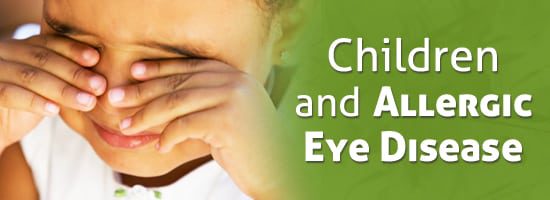Individuals of all ages have to deal with eye sensitivity and allergic eye disease. Unfortunately, children are not immune to suffering through allergic eye disease, whether it is a seasonal issue or one that lasts all year long. Understanding how allergic eye disease is triggered and how it can be avoided and soothed can help you to keep your child comfortable.
What are the symptoms of allergic eye disease?
There is a wide range of symptoms and reactions that can occur with allergic eye disease. Some of the most common are:
- Watering
- Itching
- Redness
- Burning
- Puffy eyelids
Different triggers can cause different reactions. Some triggers of allergic eye disease are known as irritants, and include things like diesel exhaust, cigarette smoke, and perfume. Others are allergens that come from indoors (dust, mold, pet dander) and outdoors (weeds, trees, and grass).
How is allergic eye disease diagnosed?
Allergic eye disease symptoms are similar to symptoms of other eye problems, making diagnosis difficult at times. To diagnose allergic eye disease, your child’s doctor might do an examination with a microscope or test cells found on the inner eyelid.
How is allergic eye disease managed?
The most basic aspect of managing and treating allergic eye disease is to avoid allergens that trigger the symptoms. A pediatric ophthalmologist can help pinpoint the things that should be avoided. Some of the most common triggers that are avoided by patients include outdoor allergens and pollen. You can avoid these triggers by keeping windows closed and giving your child sunglasses to wear outside. Avoid indoor triggers by making sure your child washes his or her hands after petting an animal and using a dehumidifier or air purifier to control triggers that might be in the air of your home.
However, sometimes avoiding all possible triggers is not reasonable. In this case, eye drops known as antihistamines can help reduce irritation in the eye. These medications come in various strengths—you can some in pharmacies or at grocery stores, or your pediatric ophthalmologist may write a prescription for a stronger version. Antihistamines can also come in an oral version.
Other medications that might be used as treatment include decongestant drops, allergy shots, and corticosteroids.



